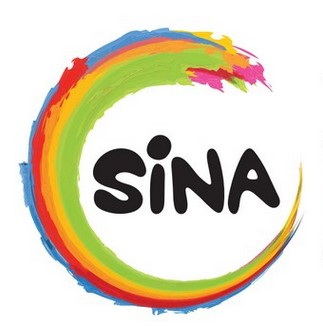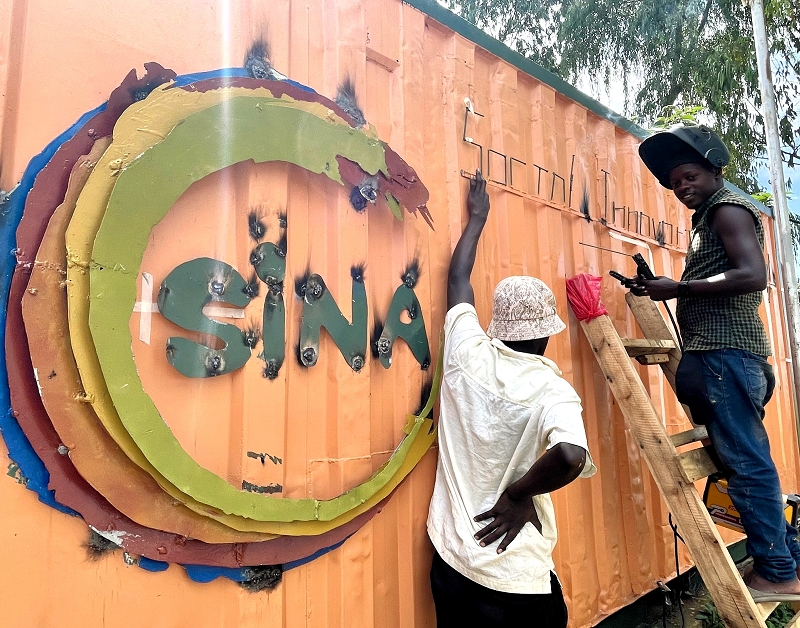Delve into the critical role of agency in overcoming deprivation and achieving empowerment. SINA’s unique approach, transcending traditional vocational training through the SINA Empowerment Framework, is revolutionizing education for youth in refugee camps and beyond.
by C. Charles Bley, MFA, as adapted from the research of Carina Schenk
It is no obscure notion that economic and social conditions across our planet are wildly unbalanced. At the turn of the last century, economist Amartya Sen noted historically recent “unprecedented opulence” in many countries as a result of technological, economic, political and social advances. Counterpoint to this, he also described “remarkable deprivation, destitution and oppression”. Sen would undoubtedly have been familiar with John Kenneth Galbraith, who said, in his 1958 book The Affluent Society:
“In a community where public services have failed to keep abreast of private consumption, things are very different. Here, in an atmosphere of private opulence and public squalor, the private goods have full sway.”
Albeit to varying degrees and with varying specific influences, the incongruity described by these ideas holds true in poor and rich countries alike. Moreover, it did not evolve exclusively alongside, for example, industrialization. Whether great gaps in wealth, health, opportunity and suffrage should be actively narrowed for the sake of the many, or left unchecked to the continued benefit of the privileged, is an immensely complex, pan-geographic, millennia-old struggle.
Denial of social and economic mobility to the world’s extremely poor–today consisting of over 600,000,000 people, or, more than 1 in 15–equates to denial of what Sen identifies as agency. He and Galbraith are among many modern thinkers who have considered the meaning of agency in this context. Several, including Sen, have offered more or less interchangeable definitions of the concept. Economist Naila Kabeer describes it as “the ability to define one’s goals and act upon them”, while social scientist Deepa Narayan asserts that agency “encompasses the ability to formulate strategic choices and to control resources and decisions that affect important life outcomes”. Sen himself calls agency “what a person is free to do and achieve in pursuit of whatever goals or values he or she regards as important”.
Each of these definitions are operative to an intertwined measure of what Narayan labelled capabilities and assets, internal and external factors which contribute to an individual’s agency in their world. Whether they be freedoms such as of movement or political participation, health and abilities both physical and mental, material goods and resources from livestock to jewellery, access to education or gainful employment, and various forms of cohesion within one’s community, all belong in the agency equation.
An increase in agency is not, however, necessarily correlated to an increase in economic capital. In social and political systems where the freedom to work–let alone the opportunity to advance in society by working–is outright denied to particular individuals or groups, the notion is rendered all but irrelevant. Oppressed, impoverished and unskilled workers occasionally exercise agency at their own risk through, for instance, organised collective action, precisely because it is impossible for them to ever generate enough capital to derive significant agency from it. So, although Narayan’s specific delineation between the instruments of agency could be debated (i.e., which are capabilities versus which are material or physical assets), money, currency, funds, inheritances and bank accounts are not part of the assessment at hand.
For disadvantaged individuals who lack the instruments of agency, it may be difficult even to envision their own survival. This precludes the possibility of believing they have any agency in their lives or the places they live. If adverse conditions persist into adolescence and beyond, this can cause defeatism and depression–internal barriers to employment common to human beings the world over. As such, the approach of the Social Innovation Academy (SINA) is to focus on the empowerment of its scholars, some of whom are the least-advantaged individuals imaginable. This includes but is not limited to youth living in refugee camps; as of 2023, the majority of SINA’s nine locations are based in refugee camps and settlements.
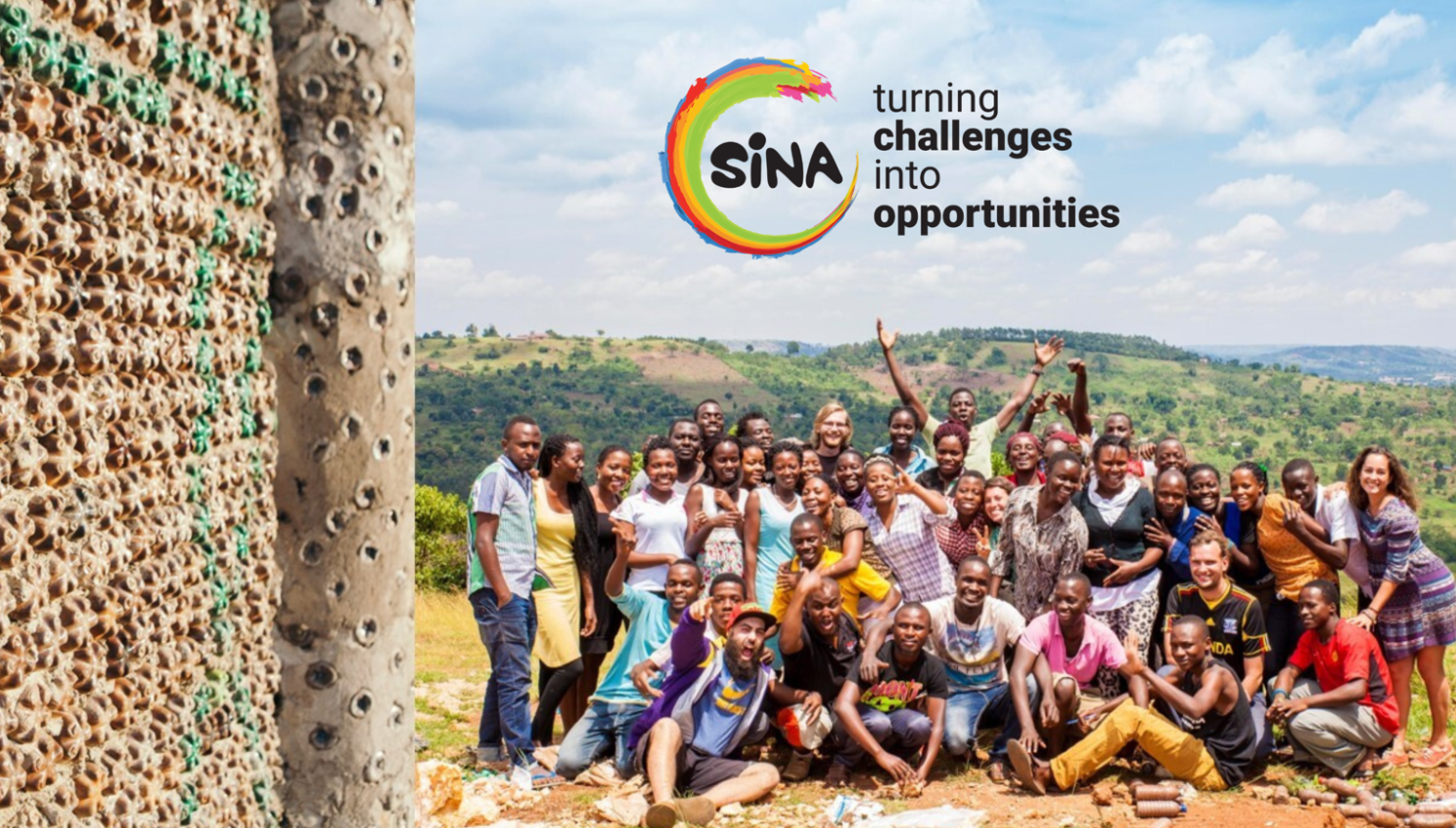
SINAs can in part be described as vocational institutions. But where other vocational institutions normally rely on curriculum, SINA offers a framework (the SINA Empowerment Framework, or SEF), placing emphasis on structure–not in the hierarchical sense but based on instruments of agency like social equality and freedom of participation. The starkest contrast to this, especially within various other African nations, is found in colonial mainstays such as the Bismarck model. Broadly, Bismarck education entails the imparting of information by an authority, and the regurgitation of that information by pupils.
At a SINA, that traditional or colonial dynamic is foregone entirely. Further, any training offered by the academy which could be called vocational is largely specialised per the self-identified interests and strengths of each individual scholar, making it only a stepping stone to self-reliant entrepreneurship. In turn, entrepreneurship and enterprise training is one pillar of an overarching construct of agency-building, actualization, and support. Central to this is the empowerment pillar (including the SEF), which identifies four “spheres of learning”. All of these spheres cover different facets of skill-building or habit-forming–from deeply personal to professionally applicable.
Two spheres speak broadly to harmonising the innermost self with one’s surroundings, and acclimating one’s self to new realities and possibilities. Thereby, forms of agency are fostered that mentally and emotionally counteract learned, conditioned mindsets a scholar typically brings along when they begin training at SINA. Common examples include anything from generalised culture shock, to feelings of inferiority and inadequacy, to seemingly prescribed and inescapable aspects of their earlier lives, e.g., that they have no social support and can not rely on those around them, or that they possess no qualities that would be considered valuable or useful.
The Community Living sphere–to be supported not only by scholars but everyone on a SINA campus–necessitates constant social interaction and cooperation. It models the need to act considerately and respectfully, leading to gains in social and interpersonal health. It also helps develop the responsibility aspect of agentic freedom. Taking up and co-filling roles within SINA, while teaching practical knowledge, skills, and habits applicable to co-working and being a member of an organisation, also comes with lessons to do with the responsible use of agency. This sphere involves building agency through hands-on experience modelling a future professional life–not only by strengthening their own confidence and business acumen but demonstrating the value of their peers’ confidence and successes.
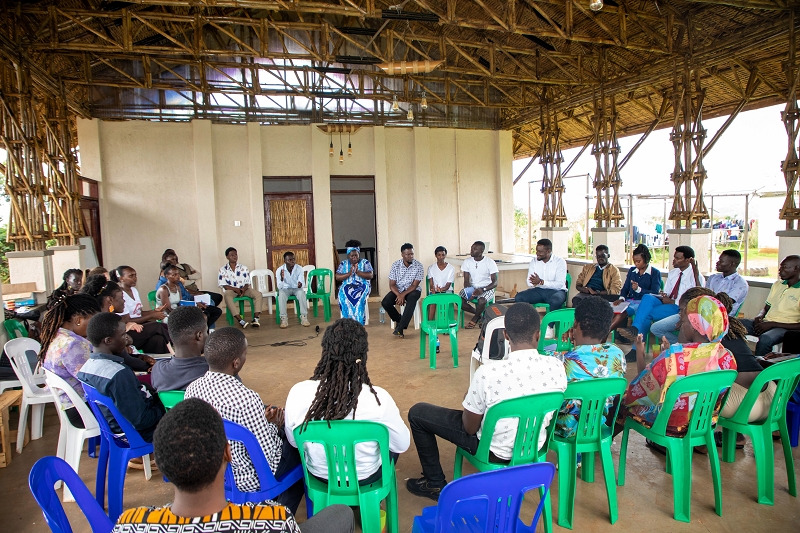
Complimentary to co-working, one of the two remaining spheres of SINA learning relate to comparable but different skills than those covered by role-filling. Training sessions also teach knowledge, skills and habits, aiming not only to identify ability but build character both personally and professionally. Finally, the Social Innovation Academy reveals the very roots of its namesake to scholars. Social innovation means developing an enterprise (and, subsequently, a legitimate means of self-employment) which creatively serves a specific need, for instance, in a particular scholar’s community of origin. The most personal agentic byproduct of the enterprise sphere is resilience–restarting and improving on one’s enterprise concept or product even after one or more failures.
Since these types of affirmations and resources have essentially never been available to SINA scholars prior to their acceptance into the academy, they are quintessential to fostering agency. However, a relevant developmental question raised is, to what extent is an individual naturally equipped with the capacity to exercise agency when they have it?
⥁⥁⥁
Similar to vocational institutions, SINA fits the definition of an alternative pedagogical practice, as hypothesised by Aubreyn Sidle, an educator and sociologist, who suggests that “the vast majority of life skills programmes […] create agency or agentic capacity.” It is helpful to note the subtle difference between these terms: Sidle states that if a person has agency, they also possess agentic capacity. The assumption is that if one possesses what is required for agency–the array of instruments such as were proposed by Narayan–they also possess agentic capacity. The argument could be made, though, that one may very well possess certain agentic instruments such as emotional and intellectual health but be too constrained by their circumstances to exercise their true agentic capacity. A more common way to define this construct might be an individual’s personal potential. On an individual level, personal potential can not be guaranteed based solely on external forces, neither can it be completely ruled out.
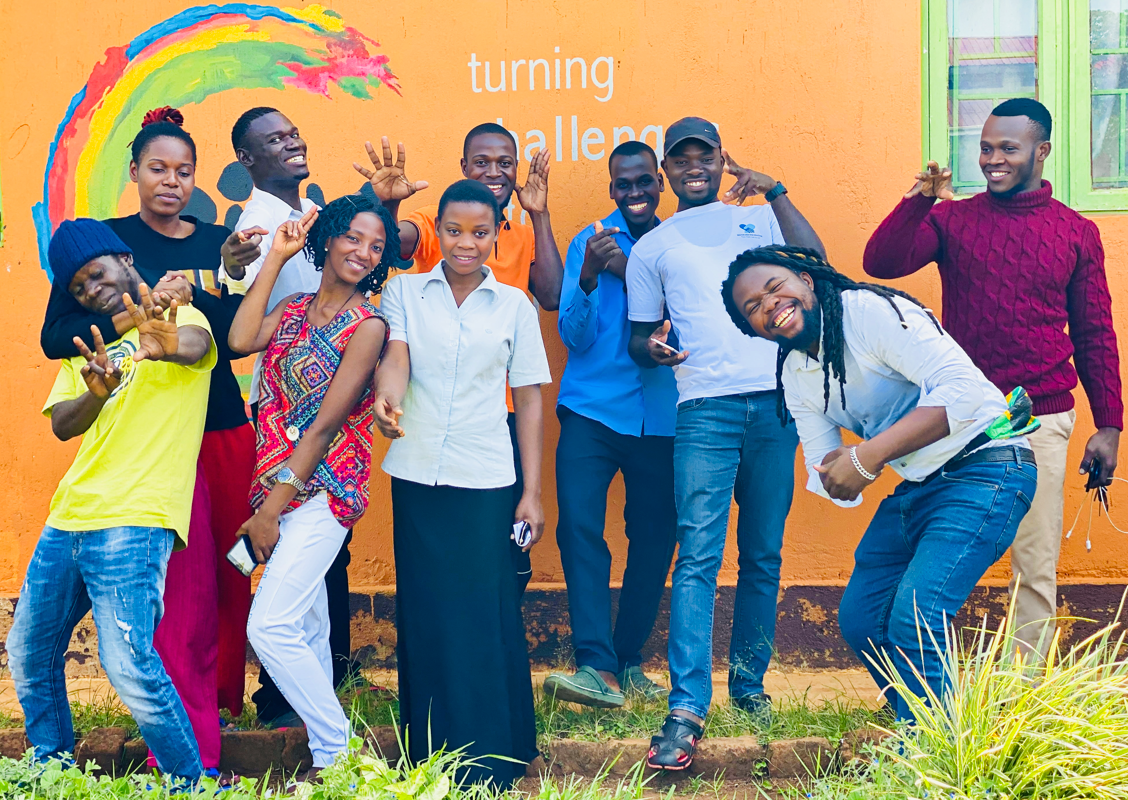
For example, if one possesses intellect and a sense of self-esteem, and is brought up relatively free from political, financial and social restriction, their life has inbuilt agency. They are likely aware of their freedom to make choices toward determining their own path. Additional instruments of agency here might include access to the external resources needed to act on their choices, or role models who can mentor the individual to that effect. Success should be easy to visualise, and they will not be easily discouraged when presented with obstacles. Conversely–and this is particularly true for those in stable, wealthy societies–the agent in question is free to disregard their agency and opportunities while nonetheless maintaining stability via, for instance, government safety nets or a personal support network of family and friends.
Another individual, constrained by external and adverse forces–political oppression, poverty, gender discrimination, et al.–may see themselves surrounded by nothing but obstacles, and rightly so. Their outcome is subject to systems and structures designed to constrain or altogether eliminate their options. It is unlikely for their community to produce role models or success stories to learn from and emulate. They become resigned to thinking they have no chance of success or advancement.
Even if this disadvantaged individual happens to possess physical ability and mental faculties which might otherwise lend themselves to the exercising of agentic capacity, the external factors determining whether or not they find an outlet for their ambition are socially, psychologically, politically and generationally inextricable from one another. Agency is denied. If they are able to cling to any aspiration or hope, this potential agent could eventually decide to risk their life migrating to a more hospitable part of the world. Historically, and somewhat ironically, this will include sacrificing their agency further by handing over the extent of their assets to human smugglers.
This points to why the current standard of education in places like Uganda is not well suited to the populations and cultures it serves. All factors considered, this traditional educational system, although it does engender crucial skills such as literacy and a command of maths, releases scholars into economies or regions where there are few or no gainful applications for the academic knowledge they have memorised. Especially for those who are not geographically or financially positioned to complete secondary education and enter university, there could be no path but back to the high unemployment plaguing their young peers. Unless they can gain admission into a vocational program–or, a SINA–their choices are limited. Limited choice, as previously alluded to, is another definitive denial of agency.
The typical SINA scholar is between the ages of eighteen and twenty-seven, and, in the true spirit of engendering agency, age is one of the few demographic criteria for application to the program. This particularly includes female scholars, whose advancement beyond motherhood or menial labour can be all but proscribed in regions like those served by SINA. Sidle herself collaborated directly with Amplify Girls, a collective of East African community-driven organisations focused on improving the lives of adolescent girls. Through her work, she developed a framework pertaining to agency:
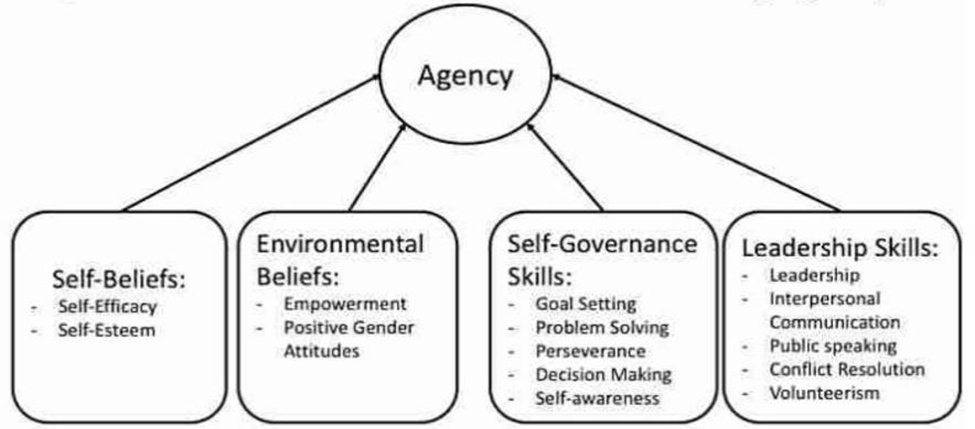
Naturally, Sidle’s organisation and division of the instruments of agency is slightly different than Narayan’s, and both only speak to a portion of SINA founder Etienne Salborn’s empowerment concept (the Purpose Safari). Complex as it is, in practice the five-step process reliably makes independent social entrepreneurs of disadvantaged, displaced, disaffected young people. These scholars typically begin their training in what is known as a confusion stage, with no line of sight to the eventuality that they might conceive of and own their own business. Since the majority of SINA scholars–graduates and non-graduates included–do in fact reach this milestone, many also become job creators. In this way, the SINA’s program embodies the very definition of open-ended long-term agentic incubation.
Agency of the quality described above can be thought of as infectious, an empowerment which spreads beyond those who receive training. We do not see agency passed from one party to another in a terminal fashion, but paid forward in a way that allows it to spread exponentially. If a disadvantaged, unemployed young person in Uganda merely hears about a place where others have already gone to simultaneously alter their mindset, learn skills, be among other like-minded youths, and receive open-handed guidance toward developing a business plan which will eventually make them independent, then the very existence of the Social Innovation Academy equates to the scattering of agentic seeds amongst any disaffected populations it consequently touches. The combined sense of agency made possible for a region or nation through the passion and dedication of a few is, theoretically, only limited by how many individuals can be trained by the available SINA campuses, and how far word of mouth about the program and its success stories is able to spread.
⥁⥁⥁
Another key tenet of SINA, ensuring that a healthy brand of agency is passed along from newly empowered individuals to others in their communities, is to avoid emphasising profit-making or power. This is because there is a dark side to agency, namely, using one’s money and power over others. Kabeer listed force, threats and coercion as common marks of the abuse of agency. No different than with positive uses of agency, the propensity to abuse it can be passed along. Europeans and early Americans, in their infinite agency, abducted and enslaved Africans, and when some of the descendants of those slaves were freed and sent to Liberia, they used their newfound agency–along with their knowledge of chattel slavery–to enslave the natives of the region.
Rather, empowerment and agency must be paired with an instilled sense of responsibility to one’s community. One example from the SINA experience involves the notion of plausibility often self-reported by its scholars and alums. When scholars are shown that they have a high chance of success if their enterprise serves a specific need or solves a specific problem in their communities of origin–especially when related to traumatic experiences they survived and could prevent others from experiencing–they come to see that when they benefit others, they both benefit and heal themselves as well.
Agency is something that can be given or taken on a grand scale, whether politically, socially or through religious edict. On a small or individual scale, however, it can be taken, yet not so easily given. It must be revealed with appropriate context, within a framework which balances freedom and responsibility.
